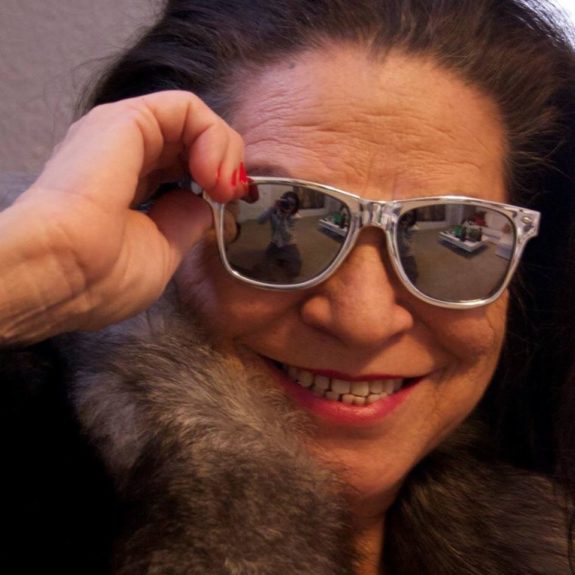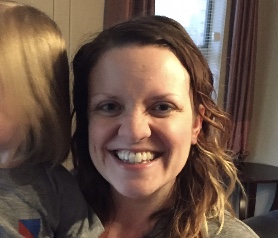Editor’s Note: Columnist, Sara Farmer, is writing a limited series for DIY MFA in which she interviews #ownvoices authors and authors of color. She began her series with an interview of Silvia Moreno-Garcia, author of Mexican Gothic. Check back in two weeks for the next installment!
About Marcie Rendon

Marcie Rendon, citizen of the White Earth Nation. Girl Gone Missing, Cinco Puntos Press, is the second in the Cash Blackbear series and is nominated for the Putnam’s Son’s Sue Grafton Memorial Award, 2020. Murder on the Red River (2017 Cinco Puntos Press) received the Pinckley Women’s Debut Crime Novel Award 2018 and the Western Writers of America Spur Award Finalist 2018 Contemporary Novel category. Rendon has non-fiction children’s books and four plays published. Her script, Sweet Revenge has been chosen to be performed as a staged reading in the Oklahoma Indigenous Theatre Company’s 2020 New Native American Play Festival.The creative mind of Raving Native Theater, she curated TwinCities Public Television’s Art Is…CreativeNativeResilience 2019. Diego Vazquez and Rendon received the Loft’s 2017 Spoken Word Immersion Fellowship for work with incarcerated women.
[Author’s Note: I spoke with Marcie Rendon over Zoom. Our conversation has been edited for length and clarity.]
Sara Farmer: My first question is about the structure of the two Cash Blackbear books. They really don’t have chapters. I was curious about that, especially since the first one has a short chapter and then the second chapter is the rest of the book. Why did you choose that format?
Marcie Rendon: My friend is a professor at St. Kate’s here in the Twin Cities. Her class studied the books and she asked the same question. What they decided as a class was that because my writing form is more like storytelling that it just kind of went on and on without chapter divisions.
Maybe in my third book I will put chapters. I’ve had other people say you need to put chapters in so people can stop and go to bed at night. I think they might be right. I don’t outline. It’s not a particular format that I’m following. I just write the story.
Lee Byrd at Cinco Puntos Press is the publisher and we’ve gone back and forth about chapters. Should we put in chapters? Should we not? I think just kind of by default we decided to not put the chapters in.
Sara: Why did you choose to make these crime novels? They’re very rich as character studies and a profile of racism, as well as a beautiful rendering of the Minnesota/North Dakota border in the Vietnam era. The crimes definitely add excitement and suspense and help highlight issues of racism and sexism. But I just couldn’t help wondering – why is Cash an amateur sleuth, especially when the poor woman has so many other jobs?
Marcie: Well, I read crime. When I made the decision to try and make my living as a writer, I started writing crime novels. I think I have three in the garage that I knew were bad. They just weren’t going to go anywhere and I gave up. I thought, “Okay, I’m not a good crime writer.” I tried to write a romance, even though I had never read a romance novel. I heard that people make money writing romance. I got rejected by Harlequin.
Then I decided I was going to do a fluff book. It was about a young woman who writes poetry, goes to Nashville, and makes it big in the music world. I sat down to write that book and Cash appeared instead saying, “No, no, no, no” and her story appeared. It kept appearing as long as I wrote what was coming to me. The story kept coming to me and it worked and it just was a crime story. By the time I was ¾ of the way done with book one, I had the idea for book two, and the same thing with book three.
Sara: Cash’s sense of self is remarkable considering her separation from her family and birth culture and bouncing around between white foster homes. But in the second book in particular, you see that certainty morph into using habits, like playing pool and drinking, to hide from her new life as a college student. You also see the effects of childhood trauma in her “not wanting anything” and her discomfort with sleeping in other people’s homes or riding in cars while others drive, even her lifelong friend and protector Sheriff Wheaton. But her increasingly frequent flashes of temper show the beginnings of processing her feelings. Did you research childhood trauma and complex PTSD in adults? Or is this based on common experiences of Native American children and adults?
Marcie: With book one, I was just writing this story. I didn’t have a backstory agenda. I wasn’t thinking I want to make this about racism against Native people. There’s a line in Murder on the Red River where it says, “And she never saw her mother again.” My editor Lee and I were going back and forth over email. She said, “Well, nobody’s gonna believe this. That just doesn’t happen.” I said, “Lee, what do you mean? It happens all the time in Indian country. This is just about everybody’s story.” She said, “Are you kidding me?” I said, “No. This is real.”
As a writer, we’re told to write what we know, so I think that in a certain kind of way, I’m just writing the story from my worldview. I’m not sorting out what’s Native and what isn’t. I’m just writing it and that’s the story, the story of racism, the story of removal, the story of trafficking, the story of connection to the land, that’s all the Native existence, which I just take for granted in some way. I don’t know if “take for granted” is the right words. It’s my lived experience. Those kinds of connections, that way of seeing the world.
I want to write a good story that people want to read. I’m not trying to educate people. The fact that that’s happening is very good. I’m glad that people can pick up and have a wonderful crime story that they want to read and at the same time say, “Oh my God, I didn’t know this. This is opening my eyes or makes me think differently about this thing.”
Before I started writing full-time in 1990, I worked in the state prison system doing pre-release programming for Native inmates. After that, I worked as a counselor primarily with either victims of sexual assault or perpetrators of sexual assault. And again when I was writing the book, I wasn’t thinking of all that at first. My experience just came in. The accumulation of life is what we put into our writing.
Sara: While reading, I kept forgetting these books are set in the Vietnam era. The historical references are subtle, but also the racism and sexism that Cash experienced, while disgusting, did not shock me. It seemed like incidents that could and do happen today. Why did you choose the Vietnam era?
Marcie: Two things. Book one came out around the same time as Standing Rock. If you look at the 1969-70 era compared to now, there hasn’t been that big of a change in the racism that gets directed at Native people. It really hasn’t shifted.
Setting it in the ‘70s was one of the things that was intentional on my part. I did not want to have to deal with cell phones and DNA. I mean you could solve any crime today with a phone call practically.
Sara: And now for the question I ask all of my interviewees – how long did it take you to write your first novel? Do you have drawer novels?
Marcie: I’m a pretty fast writer if I can get the time and space to sit down and just type. I can get quite a bit done in a short amount of time. From the time I finished Murder on the Red River until Cinco Puntos sent me a contract was five years. I got rejected by–I don’t know how many agents and publishers. I just stacked up the rejections. That was the hardest part for me. And I had committed to not self-publishing. With Murder on the Red River, I knew that I had a sellable book. I just knew it and I really wanted to go with a standard publishing company. I think that at that time, Cash was not your typical Native story. We didn’t have the call for diversity that exists now.
When I’m talking to younger people, like in college classes, I tell them that it’s really important to know basic English. How do you write a sentence? How do you write a paragraph? How do you write a beginning, middle, and end and really have that skill down?
I also tell people to never throw their work away, which is why I still have all those books in the garage. One of them has a really good murder in it.

Sara Farmer lives in Austin, TX, with her husband, three kids, and two cats. When she’s not chasing kids and cats, she reads and writes mysteries. You can find her at www.kittymomma.com and on Twitter @avonlea79.







